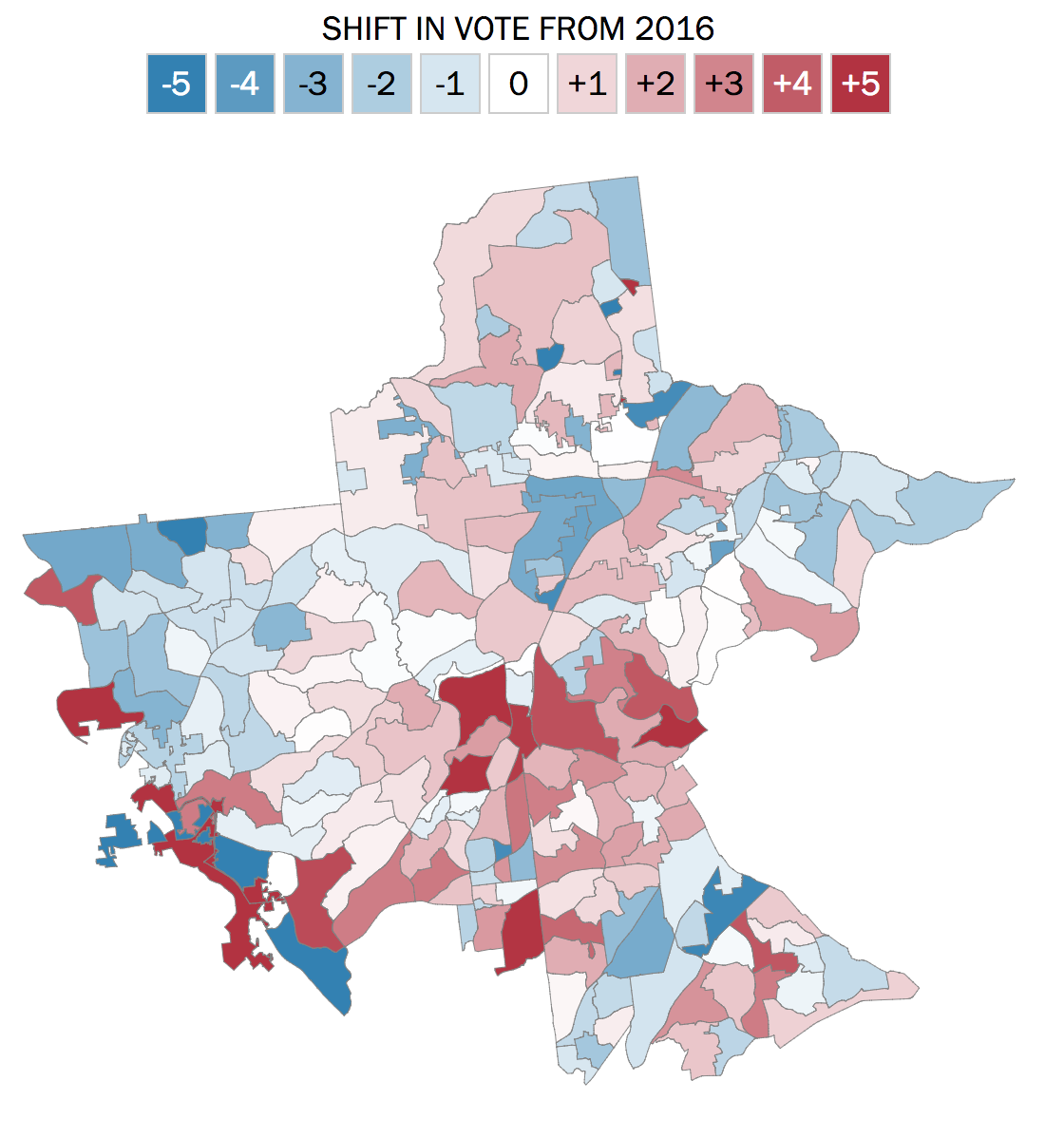After a deeply disappointing loss in Georgia’s special election, Democrats are hoping that Jon Ossoff’s narrow defeat in a staunchly conservative district is the harbinger of a shifting tide.
“This is the beginning of something much bigger than us,” Ossoff said in his concession speech. And even though they avoided an embarrassing upset, some Republicans were still biting their nails after all the returns were in. “This could be a very bad sign of things to come,” an adviser to House Speaker Paul Ryan told TIME.
But not only did Republican Karen Handel survive any anti-Trump sentiment among voters — she actually outperformed him in the district. With all 208 precincts reporting, Handel won with 51.87% of the vote in the head-to-head contest. A TIME analysis of the 2016 election results in those exact same precincts found that Trump only captured 50.44% of the vote to Hillary Clinton’s 49.56% when one discounts third-party candidates and write-ins. (Some election counters put Trump’s margin of victory in the district at closer to 1.5 points, which is likely due to discrepancies in which precincts were open Tuesday. That margin is still less than half of Handel’s 3.7 point lead.)
If anything, the biggest lesson from Tuesday night is that voters are getting even more polarized. The following map shows which precincts voted more Democratic (blue) or Republican (red) between 2016 and Tuesday’s election. Far from a tide of voters abandoning the party of an unpopular president, the precincts were almost exactly split between shifting one way or the other, with 102 getting more blue and 106 going more red.

In most cases, the shifts were slight enough not to indicate any major change in the voting composition of Georgia’s 6th district. Handel won only 6 precincts that went for Clinton, while Ossoff picked up only 3 from Trump. The biggest difference, in fact, was that, like most congressional races, Tuesday’s contest saw a much lower turnout than one typically sees in a presidential race. Last November, 76.5% of registered voters in Georgia showed up at the polls, and that figure was even higher in the 6th district, where turnout was 81.2% in the fall. By contrast, even with record-breaking spending of over $50 million on the race, only 58% of registered voters were motivated to cast a ballot in the special election.
There are just over 500 days until the 2018 midterm elections, during which time the political landscape will undulate repeatedly. Those who hoped or feared that Tuesday night would be a bellwether for the midterm elections can either shelve their disappointment or ease up on their relief. It takes more than 152 days to upend the American electorate.
See the data for both 2016 and the special election on TIME Labs’ Github page.
More Must-Reads from TIME
- Why Trump’s Message Worked on Latino Men
- What Trump’s Win Could Mean for Housing
- The 100 Must-Read Books of 2024
- Sleep Doctors Share the 1 Tip That’s Changed Their Lives
- Column: Let’s Bring Back Romance
- What It’s Like to Have Long COVID As a Kid
- FX’s Say Nothing Is the Must-Watch Political Thriller of 2024
- Merle Bombardieri Is Helping People Make the Baby Decision
Write to Chris Wilson at chris.wilson@time.com